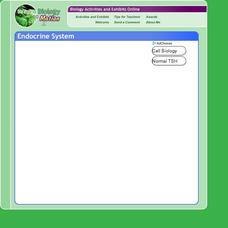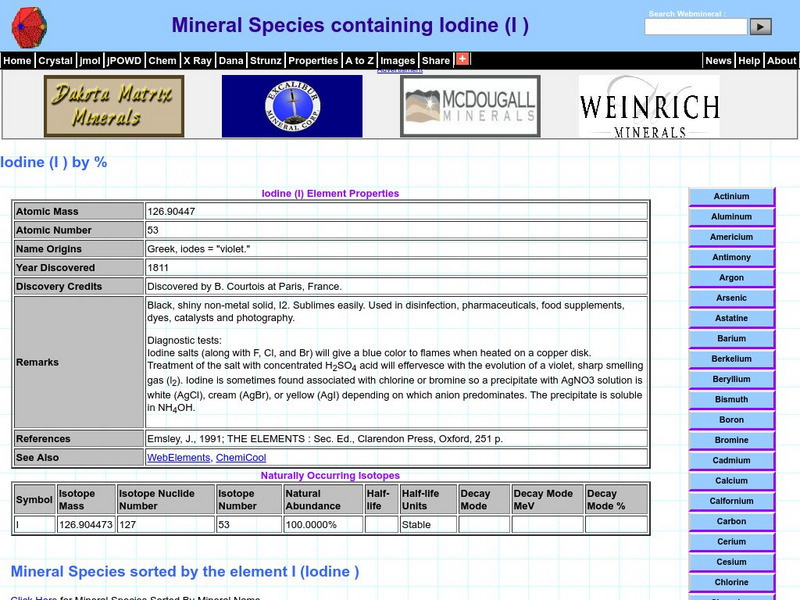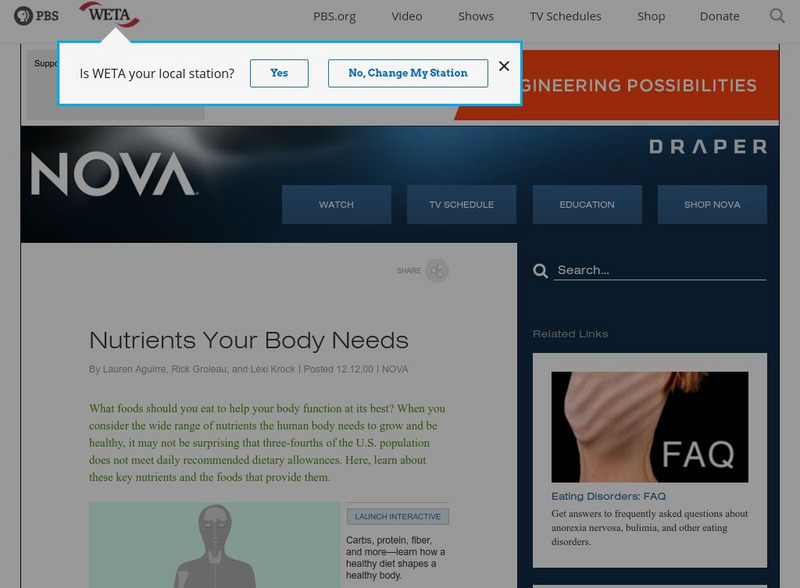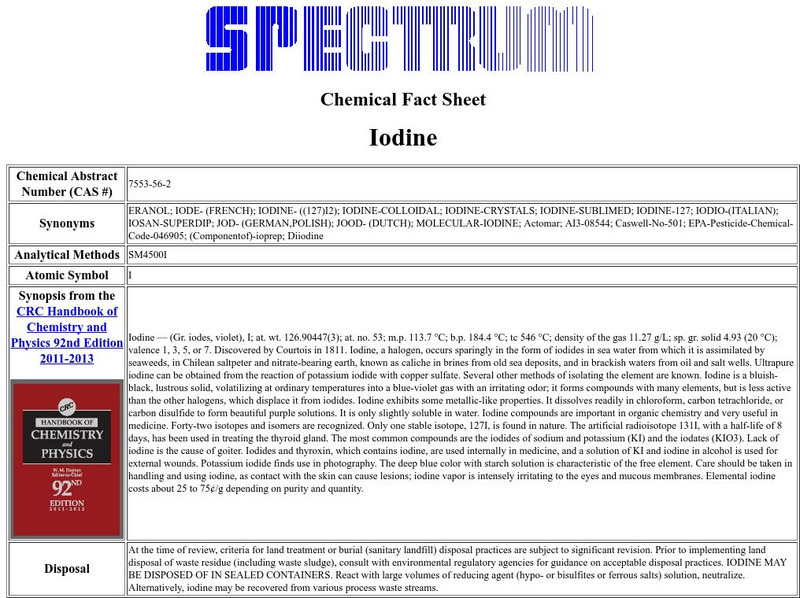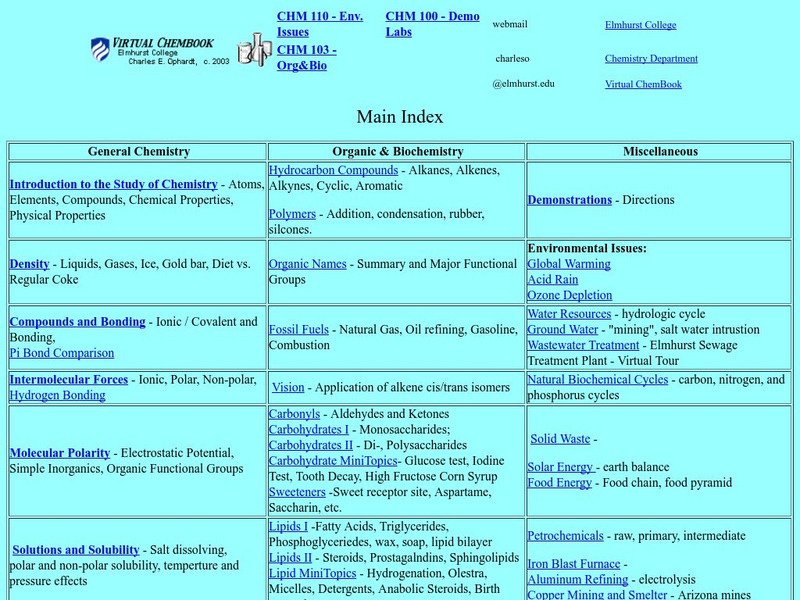Biology in Motion
Thyroid Gland and Negative Feedback
Many glands work together to control hormone levels in the body. The interactive focuses on the thyroid gland, pituitary gland, and the hypothalamus. It demonstrates the interconnections and feedback loops present in the endocrine system.
Royal Society of Chemistry
Halide Ion Tests
Young chemists love it when colorful solid products appear in a reaction vessel! Scholars discover the products that form during halide ion tests through a hands-on activity. Users go online and apply chemistry knowledge and reasoning...
Curated OER
Rates of Chemical Reactions-The Iodine Clock Reaction
High schoolers investigate the reaction rate of iodine and soluble starch. In this rates of chemical reactions lesson plan, students study the effects of varying concentrations of reactants and varying temperatures of reactants on the...
Curated OER
Digestion Experiment and Teacher Made Test
Students complete a digestion experiment using sugar, iodine, corn starch, and sugar test paper to test for starch and sugar in the body. In this digestion lesson plan, students learn how the body breaks down different ingredients.
Curated OER
Your Digestive System
In this digestive system worksheet, 9th graders identify and explain any difference found in color of the mixtures in two glasses. Then they determine what enzyme was produced by glands in the mouth changing the starch in a chewed cracker.
Curated OER
Chemistry Activity 29
In this chemistry worksheet, students write the balanced chemical equation for each. Then they calculate the mass of nitrogen dioxide created with specific amounts of nitrogen and oxygen. Students also identify how many grams of the...
Curated OER
Elements of the Periodic Table
In this chemistry worksheet, students identify and locate various vocabulary terms relating to the elements found in the periodic table. There are 116 chemistry terms located in the word search.
Environmental Chemistry
Environmental chemistry.com: Periodic Table Iodine
This is as helpful and detailed a reference as you'll likely find on iodine or any basic information relating to iodine. Highly recommended.
Encyclopedia of Earth
Encyclopedia of Earth: Iodine
Information about the element, Iodine, atomic number 53. Covers physical and atomic properties, how abundant it is on the Earth, permissible exposure limits, sources, uses, and potential substitutes.
Other
Mineralogy Database: Iodine
Basic chemical data on iodine along with a great list of iodine containing minerals (photos) with links to info on the minerals. Nice site.
Other
Web ref.org: Iodine
A good summary of iodine's properties and uses, in a very student-friendly format.
Dartmouth College
Dartmouth College: Chem Lab: Chemical Kinetics 1
In this experiment, you will determine the rate law and confirm the mechanism of the reaction between cyclohexanone and iodine. Requires Java and QuickTime plug-ins to access some features.
Dartmouth College
Dartmouth College: Chem Lab: Chemical Kinetics 2
This lab further analyzes the results of the experiments carried out in Chemical Kinetics 1. In addition, you will carry out experiments to determine the temperature dependence of the reaction rate constant. Requires Java plug-in.
Web Elements
Web Elements Periodic Table: Iodine
A very nice WebElements site with all sorts of basic data on iodine, its chemical and physical properties, isotopes and uses.
PBS
Pbs Nova Teachers: Dying to Be Thin: Body Needs
Find out what the human body needs to function at its best, and why.
E-learning for Kids
E Learning for Kids: Science: Bermuda Triangle: How Is Energy Transferred Between Organisms?
Bermuda is a mysterious place. Meet Scotty and his family and join them on their holiday to learn about energy transfer in ecosystems.
University of Kentucky
Uk: Chemcomics: Iodine
Comic fraturing iodine. Not the most detailed information, but lots of fun. Interesting and useful for visuals.
Science Education Resource Center at Carleton College
Serc: Investigating Starch in Foods
This lesson would be used during our nutrition unit when discussing carbohydrates. In this classroom activity students investigate which foods have starch in them by using iodine, as well as investigate the result of iodine and lemon...
Florida-Spectrum Environmental Services
Florida Spectrum: Chemical Fact Sheet: Iodine
This site provides a fact sheet with information on the basic data and properties of Iodine. It also includes some of its uses.
Other
Chemical Elements: Iodine
This site from Chemical Elements.com has great information on iodine. It lists the basic information and then provides the atomic structure in the form of a graph picture. A list of isotopes is also provided.
Other
Austin Nutritional Research: Reference Guide for Minerals
This site provides a reference guide to various minerals found in your daily diet. The site offers an overview of each mineral, explains the importance of each, and identifies the deficiency symptoms. Links to related information are...
Other
Moms Team: Minerals Important for Child's Diet
At this website find the answers to the following questions: "What Are Minerals?", "What Types of Minerals Are There?", "What Do Minerals Do?", and "How Can I Ensure My Child Gets Enough Minerals?" Information is provided in simple note...
Other
Scienceviews.com: Minerals and Their Uses
Every segment of society uses minerals and mineral resources everyday. The roads we ride or drive on and the buildings we live learn and work in all contain minerals. Below is a selected list of commonly used metallic and nonmetallic...
Other
Elmhurst College: Virtual Chembook: What Are Physical Properties and Changes?
Brief descriptions of physical properties, physical changes, and the process of sublimation. The three states of matter, melting point, and boiling point are described. There is one link on the page, which leads to an explanation of...


